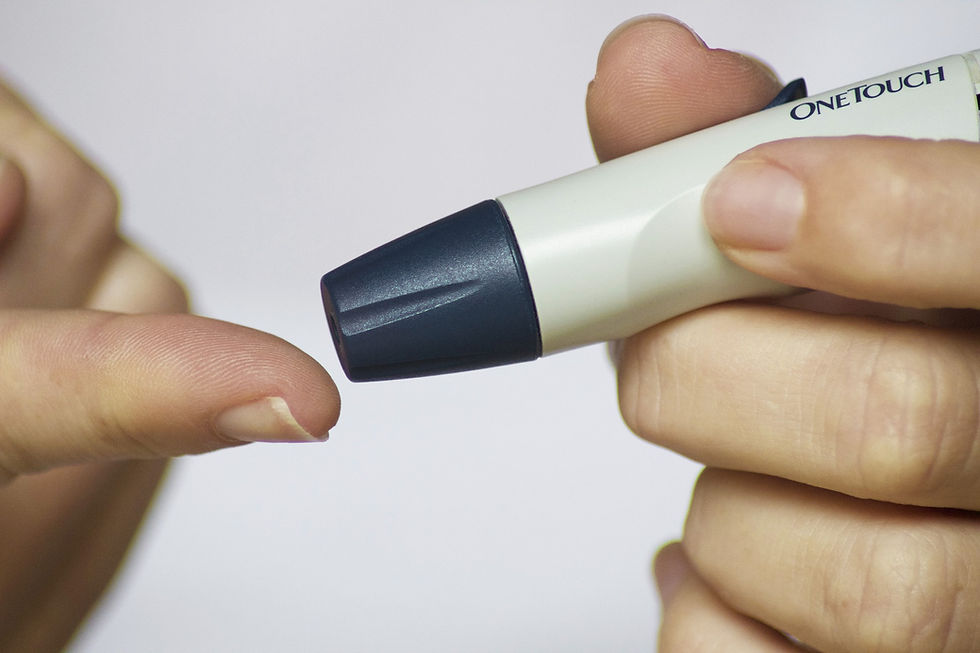Is exercise the key to helping diabetes
- Bankstown Physiotherapy
- Jan 23, 2021
- 2 min read
Diabetes mellitus is a metabolic disease that occurs when the pancreas is unable to produce insulin, or when the body is unable to use the insulin produced, resulting in elevated blood glucose levels. Insulin is a hormone that is produced from the pancreas and it is used to allow sugar from the food and drink that we consume to pass through the bloodstream into the cells to produce energy.

If poorly managed, diabetes can lead to several chronic conditions such as heart attack, stroke and narrowing arteries.
There are three main types of diabetes: Type 1, Type 2 and Gestational Diabetes.
In type 1 diabetes, the insulin-producing cells in the pancreas are destroyed by the body’s immune system.
In type 2 diabetes the pancreas produces insulin, however, large amounts of glucose in the bloodstream prevent cells from actively turning this glucose into energy. This type of diabetes is the most common form, affecting up 90% of people with diabetes.
However Gestational diabetes is slightly different and occurs during pregnancy. This is because the hormones that are produced throughout the placenta to help the baby grow have the potential to obstruct the action of glucose. In some pregnancies, women may develop a resistance to insulin or a dramatic increase in demand for insulin, both by which can result in elevated glucose. In most cases, this type of diabetes does cease once the baby is born, however, in some cases, it can further develop into type 2 diabetes later in life.
So how does exercise help?
The typical management process for diabetes includes insulin injections and various medications, however, research and study have proven that exercise can significantly reduce the side effects of diabetes. This includes, but is not limited to, improving the body's insulin sensitivity, lowering blood pressure, reducing stress, reducing anxiety, improving mood, improving sleep, helping to maintain a healthy weight, building up a resistance towards heart disease.

An exercise plan for diabetes should include several aerobic workouts and weight training workouts at a moderate intensity. This will be able to increase muscle mass and metabolism that can, in turn, build a stronger capacity to store glucose. This is because muscles and metabolism help to burn calories faster and hence better regulate blood sugar. As well, decreasing body fat correspondingly decreases the amount of insulin needed to store energy.
In this sense, exercising for approximately 30 minutes a day is a perfect way to build up this regulation. However, breaking up this exercise into smaller intervals is also effective. As well, ensure to work both the upper and lower body to ensure all the major muscles are being trained.
Don't forget to monitor blood glucose levels before and after exercise and consult a doctor before any major changes to lifestyle.
For more information, visit our website or contact us at 9793 3119.




Comments